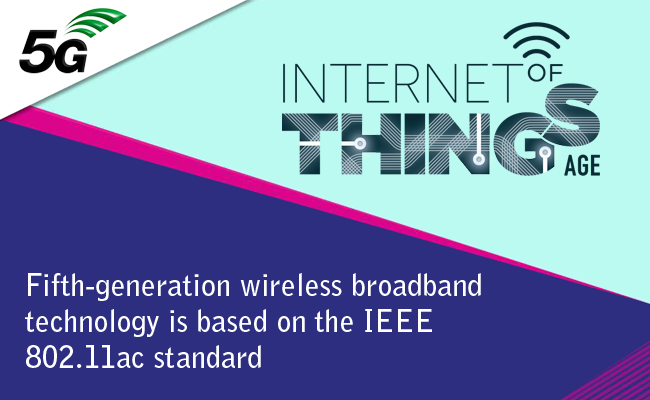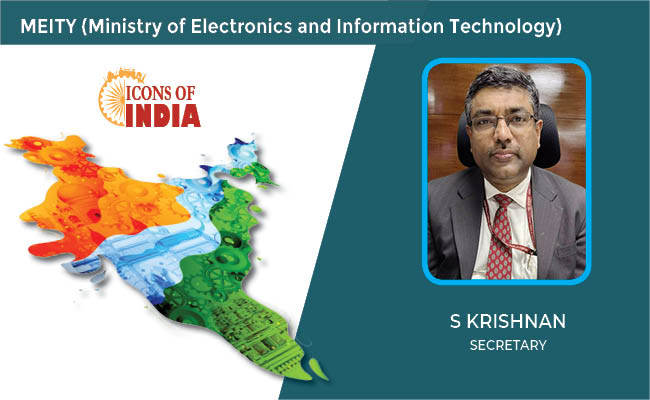Fifth-generation wireless broadband technology is based on the IEEE 802.11ac standard
By MYBRANDBOOK

Fifth-generation wireless broadband technology is based on the IEEE 802.11ac standard. An important goal of 5G is to erase the differences between wireline and wireless networking to accommodate the exploding mobility of network users. 5G will provide better speeds and coverage than the current 4G. 5G operates with a 5Ghz signal and is set to offer speeds of up to 1 Gb/s for tens of connections or tens of Mb/s for tens of thousands of connections. Huawei, a major player in the Chinese mobile market, believes 5G will provide speeds 100x faster than 4G LTE offers. 5G also increases network expandability up to hundreds of thousands of connections.
The signal technology of 5G has also been improved for greater coverage as well as spectral and signaling efficiency. These improvements stand to further enable changes like pervasive computing and the Internet of Things (IoT). Although 5G is not scheduled for launch until 2020, some manufacturers are already incorporating elements of the coming standard's specifications into their products.
Ericsson has announced that its installed base of radio products from the Ericsson Radio System portfolio will be able to run 5G New Radio (NR). This capability will be achieved through a remote software installation.
This applies to more than 150 different radio variants in Ericsson Radio System that are active in more than 190 networks around the world, meaning that Ericsson Radio System legacy radios from 2015 can support 5G NR. This 5G NR readiness also applies to Ericsson’s delivered micro radios in Ericsson Radio System and existing Radio Dot System products. In short, all Ericsson Radio System products are ready for 5G NR.
Fredrik Jejdling, Executive Vice President and Head of Business Area Networks, Ericsson, says, “We have a long history of strong backwards compatibility and our products and software are built for evolution – with Ericsson, there is no need to rip and replace. Investments in Ericsson Radio System since 2015 will continue to bring operators value when the time is right to transition to 5G."
Daniel Staub, Head of Joint Mobile Group, Swisscom, says: “Today’s news means that we can launch 5G services more efficiently with our future-proofed Ericsson Radio System products – significantly boosting the long-term value of our network assets.”
Operators will have the possibility to run 4G and 5G in the same band with the same radio and the same baseband. It will also be possible to share the spectrum between 4G and 5G with side-by-side carriers in the same band, and even with overlapping carriers using so-called ‘Dynamic Spectrum Sharing’ functionality.
According to the latest Ericsson Mobility Report, total global mobile data traffic is expected to grow eight times, while 5G subscriptions are forecast to reach 1 billion by the end of 2023. This puts increasing demand on operators to continue to expand capacity cost efficiently while addressing their 5G evolution at the same time.


Nazara and ONDC set to transform in-game monetization with ‘
Nazara Technologies has teamed up with the Open Network for Digital Comme...

Jio Platforms and NICSI to offer cloud services to government
In a collaborative initiative, the National Informatics Centre Services In...

BSNL awards ₹5,000 Cr Project to RVNL-Led Consortium
A syndicate led by Rail Vikas Nigam Limited (abbreviated as RVNL), along wi...

Pinterest tracks users without consent, alleges complaint
A recent complaint alleges that Pinterest, the popular image-sharing platf...


ICONS OF INDIA : SANTHOSH VISWANATHAN
Santhosh Viswanathan is the the Vice President and Managing Director f...

ICONS OF INDIA : S KRISHNAN
S Krishnan as the secretary for the electronics and information techno...

ICONS OF INDIA : VIJAY SHEKHAR SHARMA
Vijay Shekhar Sharma is an Indian technology entrepreneur and multimil...


IFFCO - Indian Farmers Fertiliser Cooperative
IFFCO operates as a cooperative society owned and controlled by its fa...

NSE - National Stock Exchange
NSE is the leading stock exchange in India....

CSC - Common Service Centres
CSC initiative in India is a strategic cornerstone of the Digital Indi...


Indian Tech Talent Excelling The Tech World - ANJALI SUD, CEO – Tubi
Anjali Sud, the former CEO of Vimeo, now leads Tubi, Fox Corporation�...

Indian Tech Talent Excelling The Tech World - ARVIND KRISHNA, CEO – IBM
Arvind Krishna, an Indian-American business executive, serves as the C...

Indian Tech Talent Excelling The Tech World - Dheeraj Pandey, CEO, DevRev
Dheeraj Pandey, Co-founder and CEO at DevRev , has a remarkable journe...